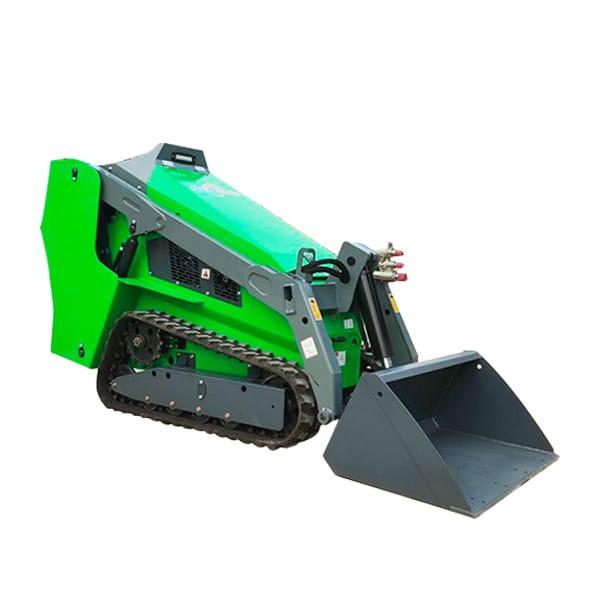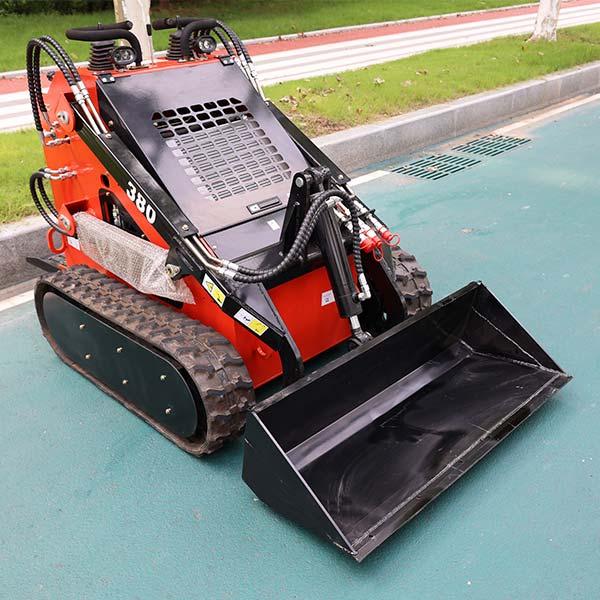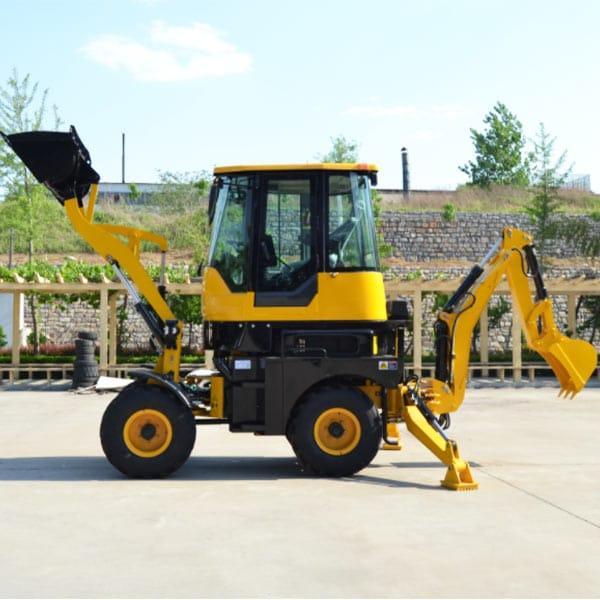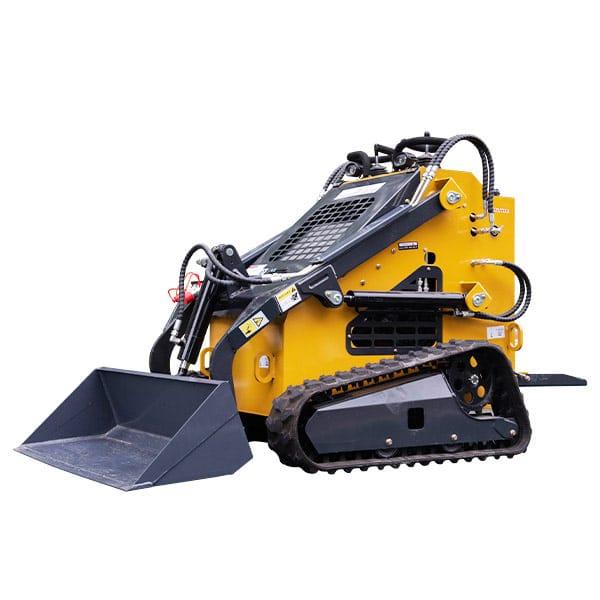Welcome to My Blog!
Before we dive into the content, I’d love for you to join me on my social media platforms where I share more insights, engage with the community, and post updates. Here’s how you can connect with me:
Facebook:https://www.facebook.com/profile.php?id=100087112105480
Now, let’s get started on our journey together. I hope you find the content here insightful, engaging, and valuable.
Introduction

Not all loaders are created equal. Each possesses a unique set of strengths, and understanding the differences between them assists you in avoiding unnecessary expenses, improving productivity, and ensuring that the machine is suitable for the job.
This blog will help you:
- Comprehend how wheel loaders and skid steers vary in structure and performance
- Determine which machine is appropriate for different types of projects
- Explore their efficiency, maneuverability, and long-term value
- Gain insights backed by data and real-world applications
According to the Global Construction Equipment Market Report, compact loaders continue to drive equipment sales, particularly owing to increasing urban development and infrastructure development.
What Are Wheel Loaders and Skid Steers?


Before diving into head-to-head performance, it’s important to define each type of machine and what it’s designed to do.
Wheel Loader Overview
A wheel loader is a heavy-duty machine typically used for transporting large volumes of material. Its large front-mounted bucket, articulated steering, and high load capacity make it ideal for bulk movement in open spaces. Wheel loaders are frequently used in mining, forestry, material handling, and construction.
- Typically heavier and larger than skid steers
- Built for productivity in large-scale, open job sites
- Suitable for heavy loads like gravel, rocks, soil, and grain
Skid Steer Overview
A skid steer loader is a compact, agile machine designed for tight spaces. Instead of turning with wheels, it “skids” to steer—each side’s wheels operate at different speeds. It’s a highly versatile machine, often equipped with attachments like trenchers, augers, pallet forks, and sweepers.
- Ideal for landscaping, demolition, indoor or confined construction sites
- Known for their ability to maneuver in narrow areas
- Compatible with hundreds of attachments
Wheel Loader Vs Skid Steer: A Detailed Performance Comparison
To help you make a decision based on function rather than guesswork, here’s a breakdown of key performance aspects.
| Feature | Wheel Loader | Skid Steer |
|---|---|---|
| Maneuverability | Better for open job sites | Superior in confined and urban areas |
| Lifting Capacity | Higher load capacity | Limited but adequate for many applications |
| Size and Weight | Larger and heavier | Compact and lightweight |
| Fuel Efficiency | Efficient over long cycles | Efficient in stop-and-go operations |
| Attachment Options | Moderate attachment variety | Highly versatile with wide attachment compatibility |
| Operator Visibility | Elevated cab for broad visibility | Limited visibility; lower cab height |
| Ground Impact | Lower due to weight distribution | Higher due to skidding action |
| Maintenance Requirements | Lower on tires and drivetrain | Higher due to tight turning and component wear |
Choosing between a wheel loader and a skid steer depends on more than just performance specs. It’s also about understanding how those features work in real-world scenarios.
When Is a Wheel Loader the Best Choice?
Wheel loaders are best for jobs that demand power, durability, and performance in wide, open settings. They shine in environments where you need to move large volumes of material quickly.
Common Use Cases for Wheel Loaders
- Earthmoving and grading for road and utility construction
- Bulk material handling at mining or excavation sites
- Transporting aggregate in large quantities
- Snow removal in large parking lots or industrial yards
If your operation involves high-volume loading and repetitive travel cycles over extended areas, a wheel loader will give you better fuel efficiency and faster job completion.
Practical Application Scenarios
For example, in an excavation site where you need to move large mounds of dirt across 200 meters repeatedly, the articulated steering and larger bucket capacity of a wheel loader save both time and fuel.
When Is a Skid Steer the Better Option?

Skid steers are ideal for projects that demand agility, especially in confined work areas. Their compact size allows for work indoors, in tight alleyways, or around obstacles.
Typical Skid Steer Applications
- Landscaping and turf installation
- Residential construction and site cleanup
- Indoor demolition and renovation
- Utility trenching and pipe-laying in restricted zones
With the right attachments, a skid steer can take on dozens of tasks, making it popular in environments where versatility is more important than capacity.
Key Long-Tail Keywords in Use
If you’re looking for a compact loader for residential landscaping or a versatile skid steer for indoor demolition, this machine delivers on flexibility and ease of transport.
According to a user survey from Compact Equipment magazine, over 62% of contractors prefer skid steers for urban and suburban job sites due to their compact size and multifunction capability.
Operator Experience: Comfort, Safety, and Learning Curve
Let’s talk about what it’s like behind the controls.
Visibility and Cab Design
Wheel loaders typically provide an elevated position and a wide view of the surroundings, making them ideal for job sites where visibility and safety are paramount. Skid steers, while improving in modern models, can still have visibility limitations due to their low cab and design.
Ergonomics and Control
Operators working long shifts often favor the comfort of wheel loaders, which generally include more space, adjustable seating, and climate control. Skid steers are more compact, which may become a challenge for larger operators or prolonged use.
Ease of Use
Skid steers offer intuitive controls, though the skidding motion can take some adjustment. Wheel loaders use articulated steering, which often feels more natural to operators with experience on heavy equipment.
Cost of Ownership: Beyond the Purchase Price
The true cost of equipment includes more than the sticker price. You need to consider operational costs, maintenance, and longevity.
Purchase and Rental
- Wheel loaders tend to be more expensive to buy or rent due to their size
- Skid steers are more affordable and often rented for short-term projects
Maintenance and Repairs
Skid steers may require more frequent tire replacements and hydraulic system checks due to the wear caused by skidding and tighter maneuvering. On the other hand, wheel loaders have fewer moving parts in the steering system, which can reduce long-term repair costs.
According to Equipment World’s 2023 Annual Fleet Report, the average total cost of ownership over five years for a mid-size skid steer is approximately 12–20% higher per operating hour than a wheel loader of similar value class, especially when used in high-cycle environments.
Resale Value
Wheel loaders tend to retain their value longer, especially those used in large-scale operations. Skid steers hold their value well too, particularly if attachment versatility and maintenance records are well-documented.
Conclusion
There’s no universal winner in the wheel loader vs skid steer comparison. The best choice depends on your specific work environment, job type, operator preferences, and long-term strategy.
Choose a wheel loader if:
- You work on large sites with heavy loads
- You prioritize visibility, power, and fuel efficiency
- You need reliable performance over long cycles
Choose a skid steer if:
- You’re working in confined or residential areas
- You need maximum attachment flexibility
- You want a cost-effective, portable loader
Matching the machine to the job is what makes all the difference.
FAQ
What’s the biggest difference between a wheel loader and a skid steer?
The biggest difference lies in size and functionality. Wheel loaders are larger with higher lifting capacity, while skid steers are more compact and versatile.
Can skid steers replace wheel loaders?
In smaller jobs or tight spaces, yes. But for high-volume tasks or heavy-duty operations, a wheel loader is more appropriate.
Are attachments interchangeable between skid steers and wheel loaders?
Some attachments can be adapted, but generally, each machine has a unique interface and hydraulic flow. Skid steers support a wider range of tools.
Which loader is more fuel-efficient?
It depends on the task. Wheel loaders are more fuel-efficient for long loading cycles, while skid steers use less fuel in short bursts and tight work zones.
Which loader is easier to transport?
Skid steers are lighter and more compact, making them easier to load onto trailers and move between job sites.





